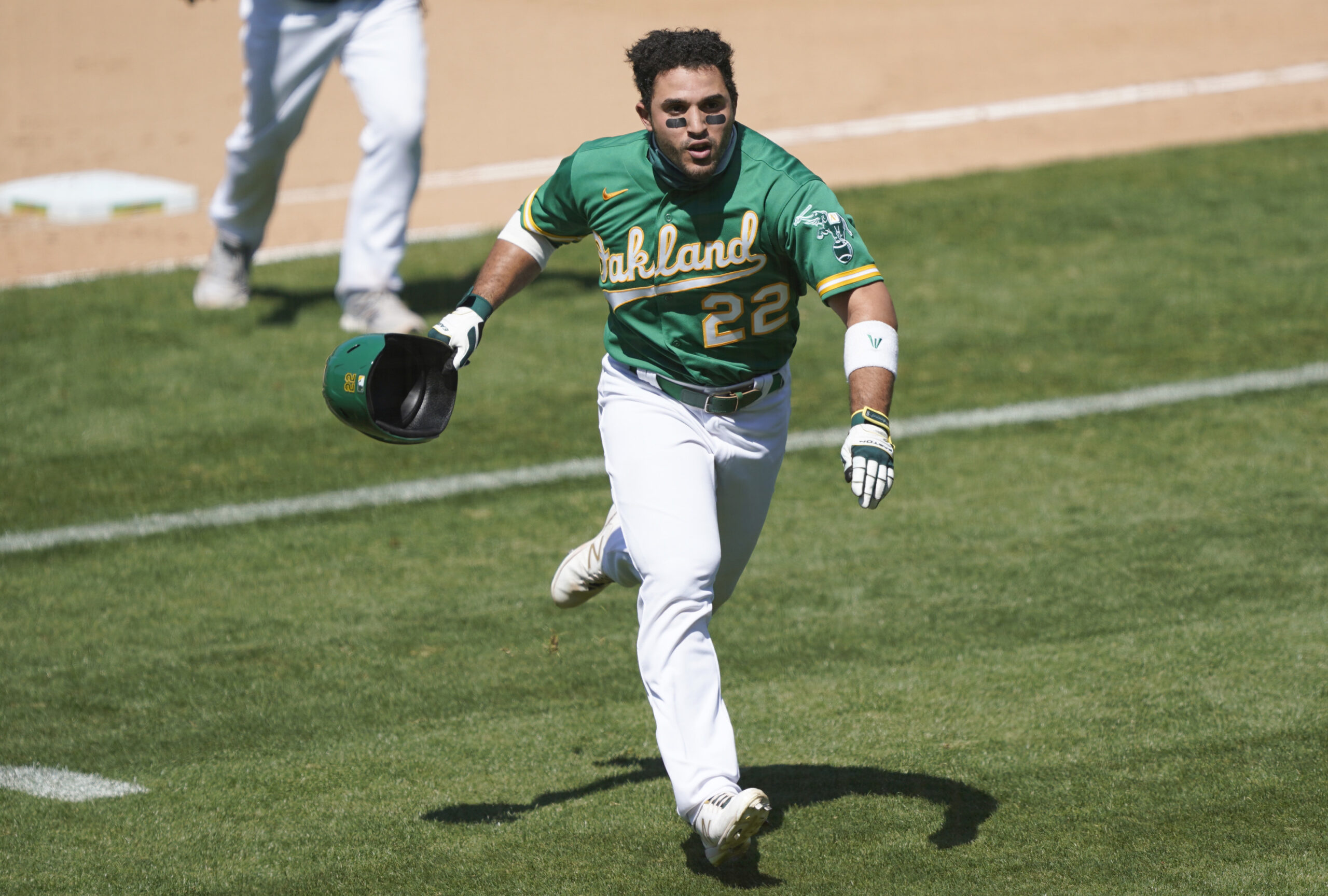The A’s Had a Wild April

The Oakland A’s, coming off an AL West title in 2020 and three straight playoff appearances, were the worst team in baseball a week into this season. Fangraphs had given them an (unjustly low) 33.4% chance of making the playoffs before Opening Day, and that percentage fell all the way to 9.2% after they dropped each of their first six contests. The A’s hadn’t started a season 0-6 since way back in 1916 – and these weren’t close contests they were losing, either. They were outscored 50-13 (!!!) in those games, giving up 12 more runs than any other team and sporting the worst batting average in the AL. Their pitching staff, which looked to be a strength entering the season, gave up eight runs or more in each of the first five games before only giving up five in their sixth loss. At that point the smell of sewage in the Coliseum wasn’t actual sewage this time – it was coming from the field.
And then, two days after their losing streak ended, they won the first of what would be 13 straight victories. Where else but Oakland?
The A’s are no strangers to starting out slow and getting scalding hot later. The 2001 moneyball-era A’s began 8-17 before finishing the year with 102 wins. The ’06 and ’12 clubs both were under .500 after 50 games before storming back to win the division. Even with those precedents, their streakiness of last month was a little startling. It quite literally was unlike anything that’s ever happened before. They became the first team in history to rattle off an 11-game win streak, let alone 13, after starting the year 0-6. The fact that the streaks were only separated by a couple of days makes it an even more astounding feat. The last team to qualify for the playoffs after a start that poor was the 2011 Rays, and at the time of writing the A’s chances stand (supposedly) at 46.8%.
The A’s clawed their way back to dominion over their division-mates on the backs of not two or three All-Stars, but a whole cast of underrated characters. The lineup went from hitting .169/.257/.265 during their losing streak to .256/.348/.478 during the winning stretch. A .256 batting average seems a little low for a team that went 13-0 in that span, but their 24 homers and 81 runs were both tops in baseball during that time. Matt Olson (.409/.460/.886), Jed Lowrie (.319/373/.596) and Mark Canha (.302/.464/.488) were the top producers that brought their run totals to league-leading heights.
Even more significantly, though, their pitching staff turned things around in a big way. In the small sample of six losses, A’s pitchers were walking more opposing batters than any other team (4.5 BB/9) and striking out the least (7.3 K/9). K/BB ratio is usually a good barometer of how effective a pitcher actually is, and the A’s placed a distant 30th in the majors that week. After shaking off the preseason rust, they cut their walks by more than half (1.9 BB/9 over winning streak) and paced the league for fewest in that category while also seeing their strikeout levels rise (9.2 K/9) to a level good enough to give them the best K/BB ratio in that time. Quite like how their lineup is more comprised of a cast of characters than star power, they don’t have that true ace sitting at the top of their rotation, but instead boast a bevy of competent starters. Sean Manaea (3 GS, 19 IP, 1.42 ERA) and Cole Irvin (2 GS, 11.1 IP, 0.79 ERA) were the standout performers most vital to their improved run suppression.
Since their win streak came to an end, they’ve gone 5-7 at the time of writing to give them a composite 19-14 record that paces the Mariners by 1.5 games. You can’t help but get the feeling that they’re just lying dormant in the weeds, though, patiently waiting until they get another opportunity to win five or six straight series. The month of May is still young – who knows what they can do by Memorial Day?
















